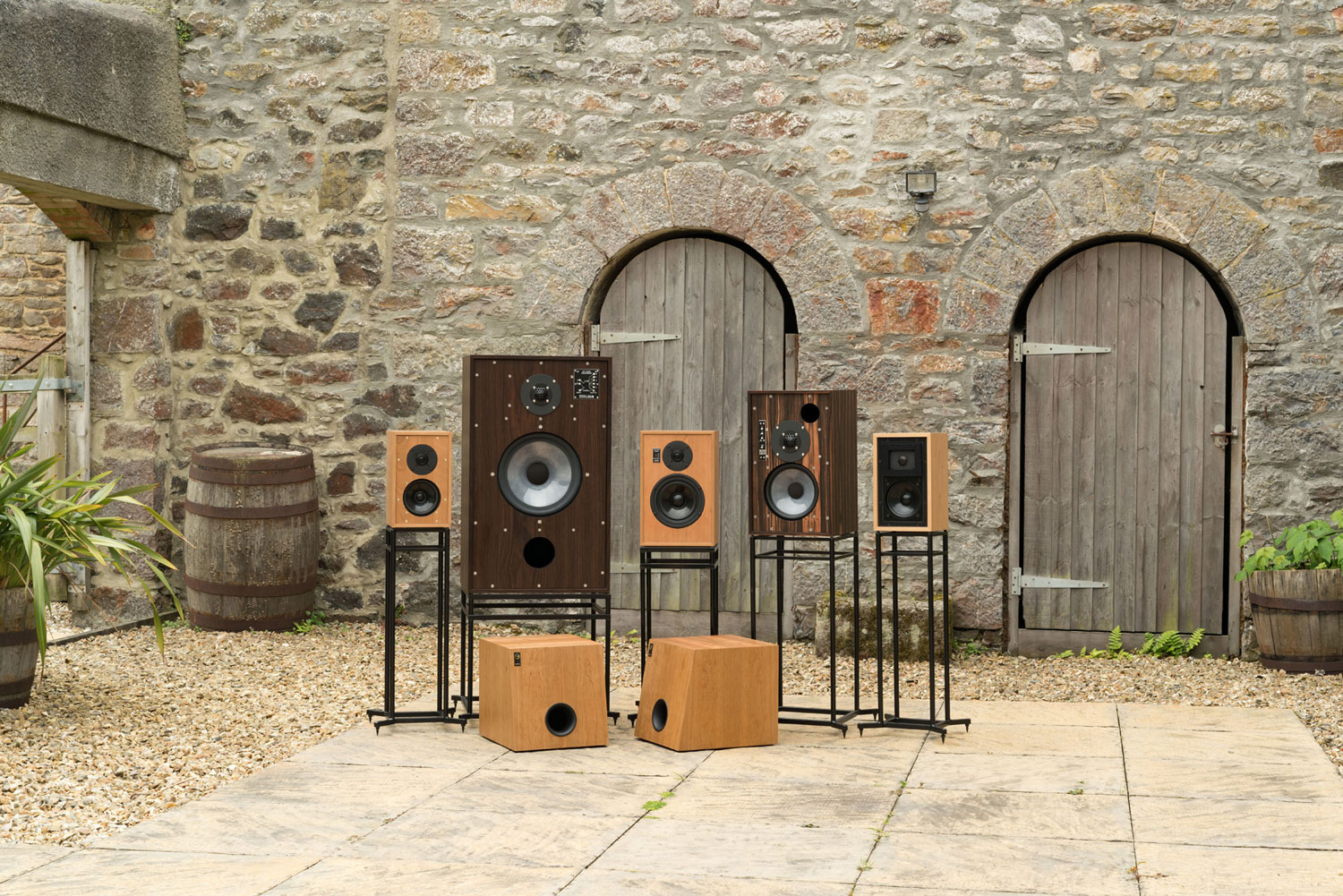Graham Audio Loudspeakers
Based in Devon, Graham Audio hand build high quality loudspeakers - including the BBC-licensed LS3/5 and LS5/9. Using the very best materials and industry-renowned experts, the Graham Audio range of highly revealing loudspeakers will let you rediscover your music collection.
Graham Audio build classic loudspeaker designs under licence from the BBC, including the miniature Chartwell LS3/5, the medium sized LS5/9 and the LS5/8 high-level studio monitor. In addition to these, the SYSTEM3D is a reference monitor that was developed for the Royal Opera House, and is intended for extremely high quality sound reinforcement, recording studios, and high-end domestic applications. From that research project, the flagship VOTU was born,and most recently, the compact Chartwell LS6 and floor standing LS/6F and LS5/9f have been added to the range.
All systems are hand-built in Graham Audio's Devon facility in the United Kingdom, using BBC "thin wall" cabinets and bespoke hand-made drive units which result in levels of transparency and realism that are hard to find in other loudspeakers these days. All the range benefit from the higest quality components sourced from the UK and Europe.
Finished loudspeakers are measured and auditioned against reference samples before packing and shipping, and come with a 5 year warranty once registered with Graham Audio.
Graham Audio also supply a range of open frame stands for optimal performance.
The Graham Audio LS8/1 Loudspeaker
The LS8/1 is Graham Audio's take on the classic 8 inch bass driver in a 2 cubic foot box format, as used by many designers over the years, including Graham Audio's own Derek Hughes (and his father Spencer, who of course designed the BBC LS3/6).
Some earlier models suffered from reliability problems because of limited power handling and also some had a bass response that didn't work optimally in domestic listening environments - not anymore!
In contrast many were able to give hi-fi enthusiasts their first taste of studio monitor neutrality, especially through the midrange, thanks to the "thinwall" cabinet construction and the innovative - for the time - use of plastics for the mid-bass driver diaphragm.
The Graham Audio LS8/1 draws on decades of experience and modern techniques. High temperature motor design and materials permit much greater power handling than ever, while building on the midrange openness and resolution of the original LS3/6.
Sophisticated soft-dome units are used for the tweeter and super-tweeter, both with protective metal grilles, and in common with many Graham Audio designs, the HF level can easily be adjusted from the front panel to help match the loudspeakers to the acoustic environment they are being used in. To do so, the grille can readily be removed as it is held in place with concealed magnets. As with the original LS3/6, the front and rear panels are attached to the cabinet with screws rather than glued joints, helping to reduce colouration by decoupling the panels, and easing future maintenance, should that become necessary.
High quality birch ply is used beneath the premium hand-matched veneers.
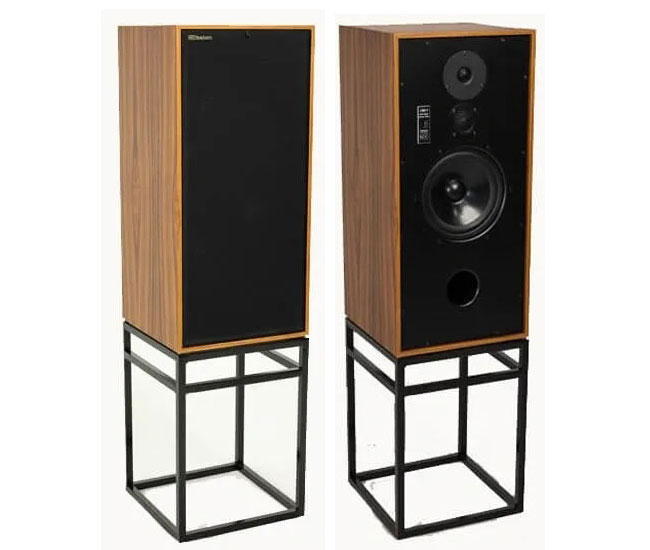
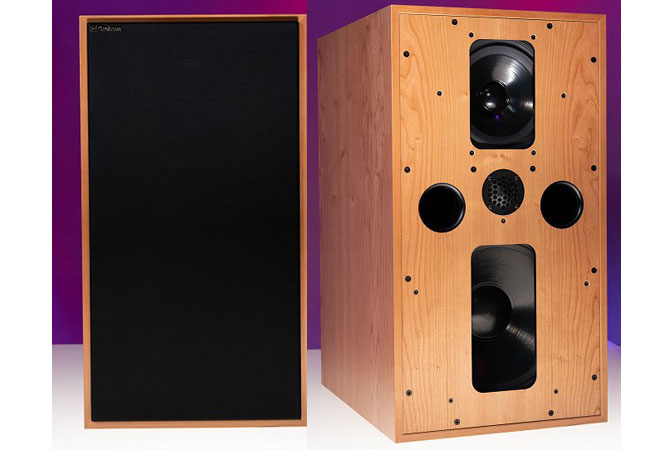
The Graham Audio LS5/5 Monitor Loudspeaker
The LS5/5 is a large three way monitor designed in 1967.
A 12 inch drive unit handles the low frequencies up to 400Hz. At this point, an 8 inch midrange takes over before handing over to the 1 inch soft dome tweeter at 3.5kHz. Overall, the frequency response is flat to within ±2dB from 40Hz to 20kHz.
Straight away you'll notice that the bass and midrange drivers are mounted behind slots on the front panel. This feature is highly unusual today, but it works to control the off-axis response of the drive units which results in a smoother response through the crossover regions in typical listening environments.
Not surprisingly, Graham Audio get a lot of questions about this, so they have written an in-depth article explaining how the slots work.
Naturally, this is a BBC-style "thinwall" cabinet, where the relatively thin panels are mass-loaded to ensure that resonances are moved away from the critical mid-range region. Rockwool provides air damping. Hand-matched veneers are applied and finished to a very high standard. The grille is carefully designed to minimise diffraction effects and is held in place by concealed rare-earth magnets.
A true full range monitor!
The Chartwell LS/6 Loudspeaker
Following the success of the Graham Audio LS3/5 and LS5/9, the next step was to discover what could be done with a cabinet that was sized somewhere between the two.
The result is the Chartwell LS6, designed by Derek Hughes.
A custom built 6 inch long-throw bass drive unit mated to a compact 17 litre cabinet gives bass extension and power handling that is comparable to the LS5/9. The bespoke 19mm dome tweeter extends to beyond 20kHz.
The overall response retains the smoothness of both the LS3/5 and LS5/9.
A large rear mounted port gives effortless bass, whilst the size of the cabinet allows it to blend easily into typical domestic environments.
The LS/6 benefits from a sophisticated crossover network which blends the two units and equalises the overall response for optimum performance in free space. A switch on the front baffle adjusts the tweeter level to +1dB or +2dB. This can be useful for situations where the listening position is off axis.
In common with all Graham Audio loudspeakers, the cabinet uses the classic BBC "thin-wall" construction, where the panels are mass-loaded to ensure that resonances are moved away from the critical mid-range region, and a layer of Rockwool is held in place by fabric to provide air damping.
Hand-matched veneers are applied and finished to a very high standard and finally the the grille is carefully designed to minimise diffraction effects and is held in place by concealed rare-earth magnets.
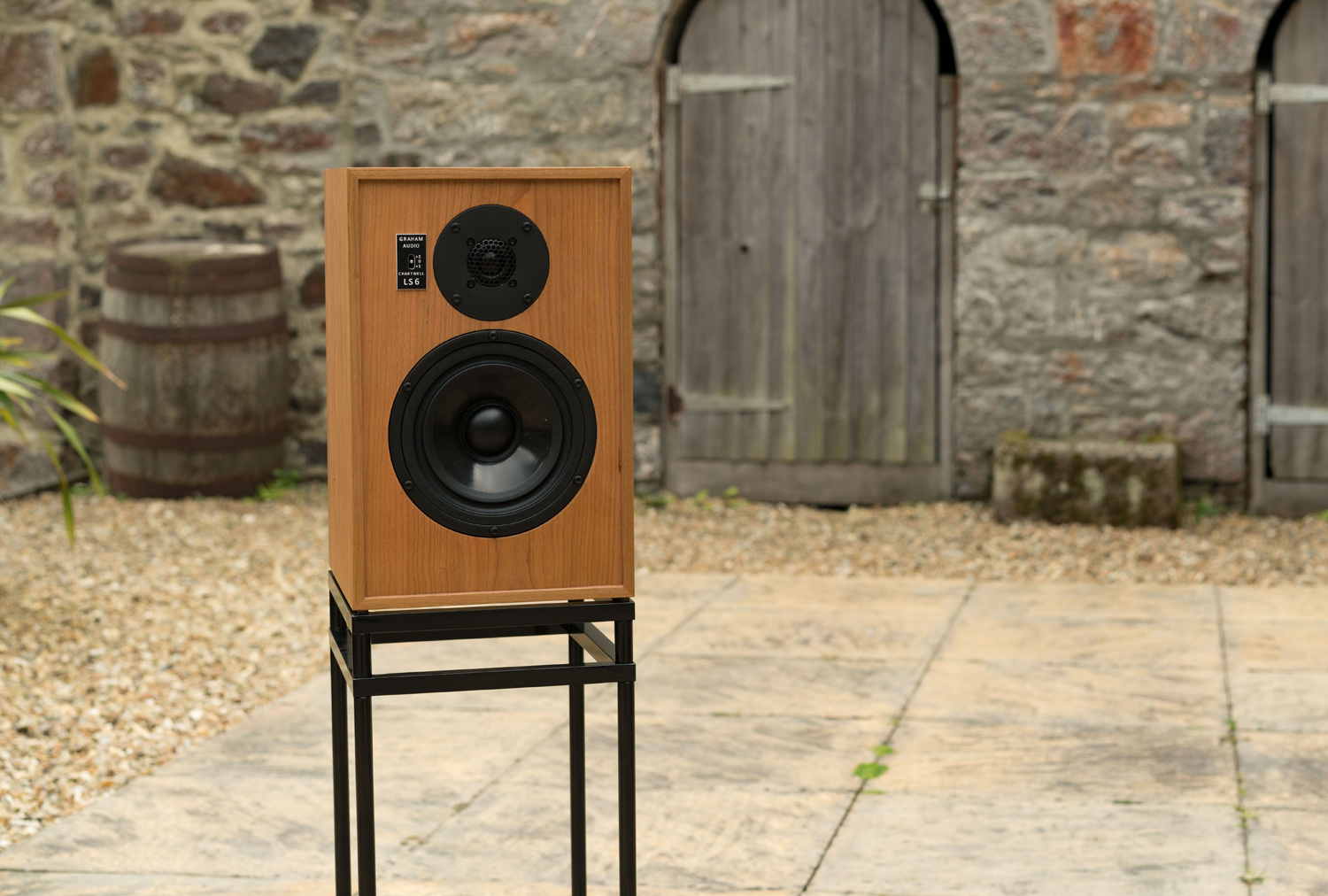
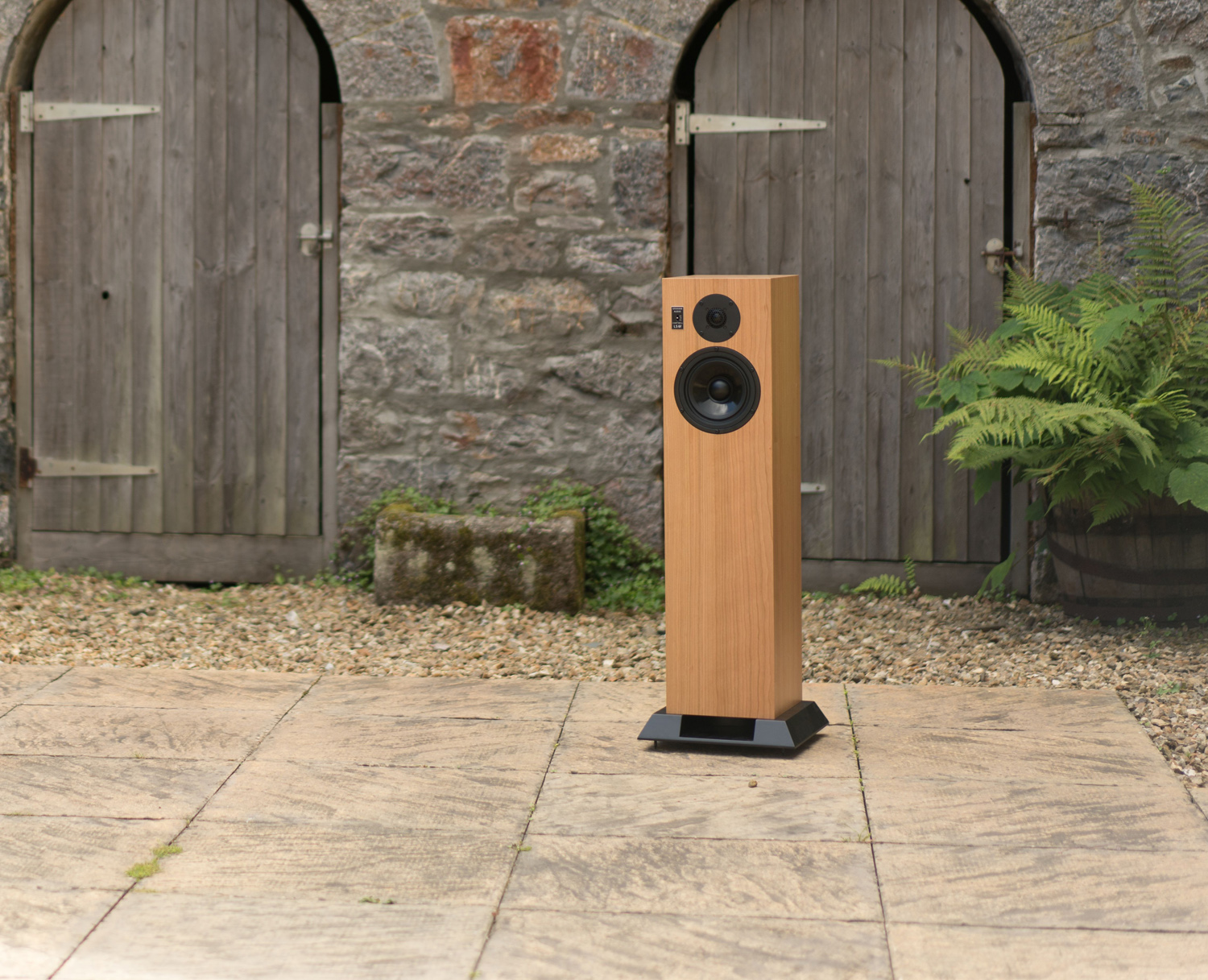
The Chartwell LS/6F Loudspeaker
Building on the success of the LS6 monitor, the Chartwell LS6/f is a floor-standing loudspeaker system that combines a modern aesthetic with the open, uncoloured sound you'd expect from a Graham Audio system.
The integrated plinth provides a flow-optimised path for the airflow from the port, reducing distortion at high outputs, while the high-quality drive units and optimised crossover are carried over from the renowned LS6. The result is monitor-class audio quality in a compact and attractive package, hand-made in the UK.
A custom built 6 inch long-throw bass drive unit mated to a compact 17 litre cabinet gives bass extension and power handling that is comparable to the LS5/9. The bespoke 19mm dome tweeter extends to beyond 20kHz.
The overall response retains the smoothness of both the LS3/5 and LS5/9.
A large letterbox vent in the plinth gives effortless bass, whilst the size of the cabinet and its footprint allows it to blend easily into typical domestic environments.
The LS/6F benefits from a sophisticated crossover network which blends the two units and equalises the overall response for optimum performance in free space. A switch on the front baffle adjusts the tweeter level to +1dB or +2dB. This can be useful for situations where the listening position is off axis.
In common with all Graham Audio loudspeakers, the cabinet uses the classic BBC "thin-wall" construction, where the panels are mass-loaded to ensure that resonances are moved away from the critical mid-range region, and a layer of Rockwool is held in place by fabric to provide air damping.
Hand-matched veneers are applied and finished to a very high standard and finally the the grille is carefully designed to minimise diffraction effects and is held in place by concealed rare-earth magnets.
The BBC Chartwell LS3/5A Loudspeaker
Graham Audio presents the ultimate version of the most famous of all the BBC loudspeakers, and is doing so under one of the most cherished names connected with the LS3/5A - Chartwell.
The bespoke drive units and crossover networks are developed by Derek Hughes working in conjunction with Volt and Seas loudspeakers to produce a fully licensed loudspeaker using the very finest materials available.
The LS3/5A is perhaps the best-known of all the BBC's monitor designs. The BBC needed a small monitor that was suitable for critical assessment of programme quality in cramped OB vehicles and control rooms, and nothing suitable was available commercially. At the same time, a separate research project - an investigation into acoustic scaling of studios - had developed a miniature loudspeaker, and it was realised that it could be adapted for monitoring use.
After much developement, the original LS3/5 was born.
Initially, 20 units were built in-house for field trials, but upon deciding to build another batch, it became apparent that KEF had altered both of the drive units, and the new units were sufficiently different to the originals to affect the way the loudspeaker measured and sounded. As a result, significant re-engineering work had to be completed by the BBC's Designs Department, and this was such a significant deviation from the original model that the A suffix was added.
The new B110 needed to be decoupled from the baffle in order to prevent an interacton with the cabinet. Next, when fed from the existing crossover, the new HF unit exhibited significant colouration which required modifications to the crossover and the addition of the familiar protective grille and felt pads. The small number of loudspeakers from the original batch were now considered obsolete, and the true LS3/5 was never manufactured commercially.
While the revised LS3/5A sounded very similar to the original, many felt at the time that the original loudspeaker was better.
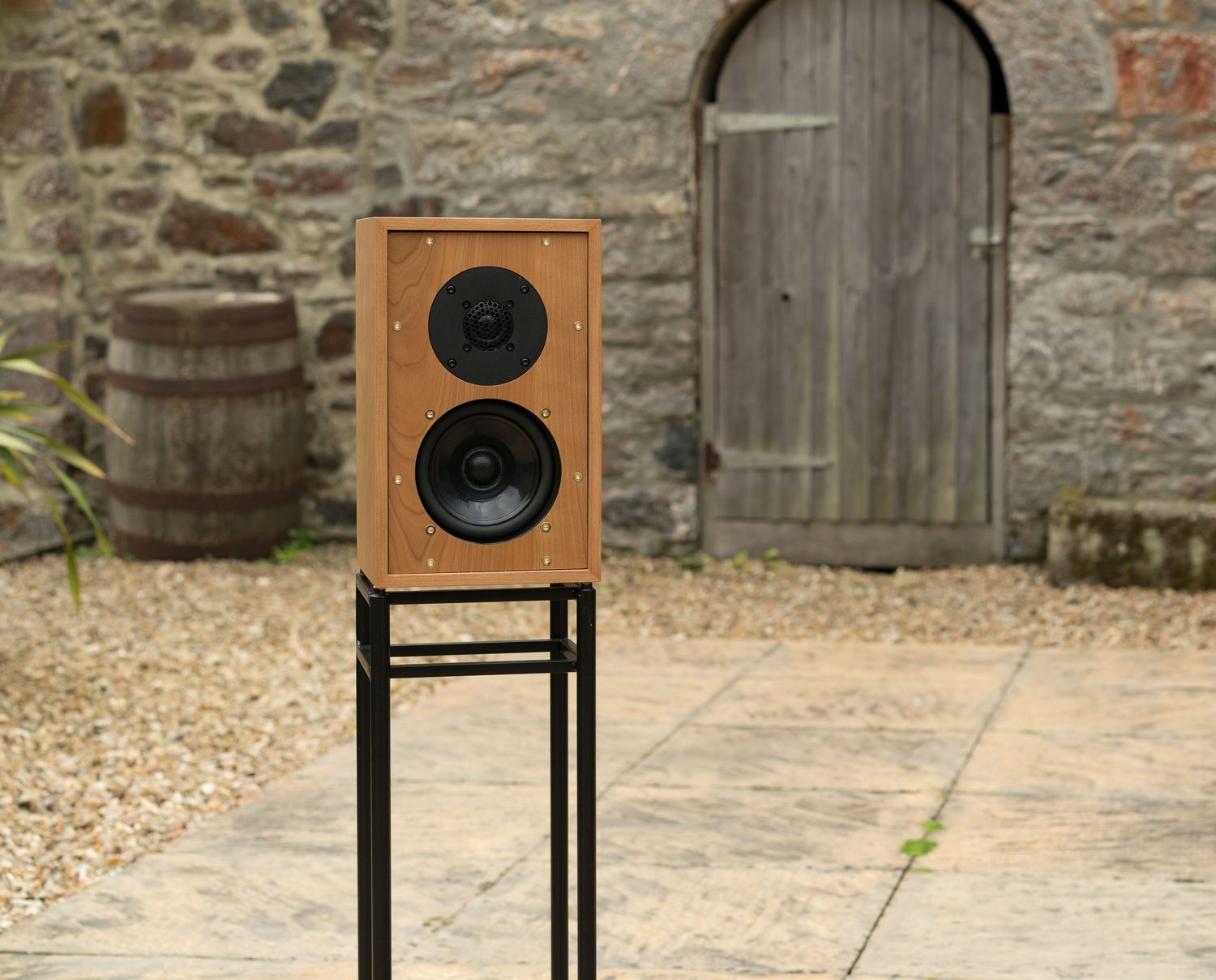
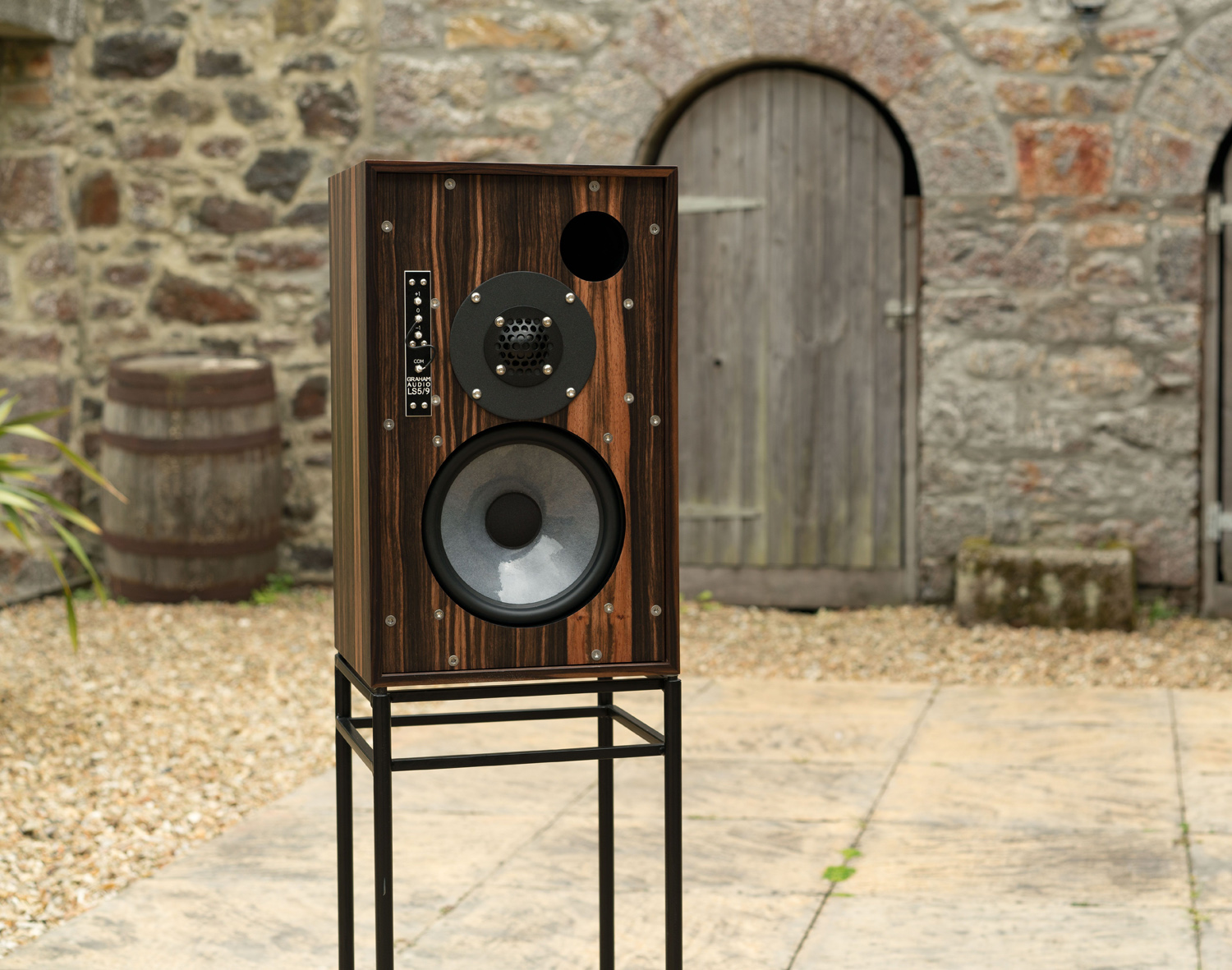
The Graham Audio BBC LS5/9 Loudspeaker
The LS5/9 is a high quality studio monitor that was designed by BBC Research and Development and featured a brand new 8 inch bass/midrange drive unit that was developed entirely in-house and constructed using the best materials available at the time.
Designed for use by the BBC in smaller studios and control rooms, the LS5/9 is a close sonic match for the larger LS5/8. Equally at home in a domestic setting, the open and expansive mid-range reveals previously unheard details from even the most familiar recordings.
With Derek Hughes at the drawing board, the original BBC design has been recreated. A new bass/midrange driver has been developed in conjunction with Volt Loudspeakers which uses a substantial die-cast aluminium frame and a massive motor assembly, allied to a diaphragm formed from a selected grade of polypropylene and matched to a high quality rubber surround. Each bass driver is hand-assembled and tested by Volt.
The tweeter is a selected version of the Audax 34mm soft dome, which is protected by a strong metal grille. A sophisticated crossover network blends the units together and equalises the overall response for optimum performance in free space.
The cabinet uses classic BBC "thin-wall" construction, and is manufactured in the UK from high quality 9mm birch plywood. Hand-matched veneers are applied and finished to a very high standard indeed. All joints in the cabinet are reinforced with hardwood batons to ensure long life and total air sealing. The panels are mass-loaded to ensure that resonances are moved away from the critical mid-range region, and a layer of Rockwool held in place by fabric provides air damping. The grille - machined from a single piece of 9mm birch plywood - is held in place by concealed rare-earth magnets.
The performance of this loudspeaker in a quality system is simply stunning!
The Graham Audio LS5/9f Loudspeaker
A development of the famous BBC LS5/9, the LS5/9f is the perfect choice for those who prefer floor standing loudspeakers over the traditional stand-mount form factor.
However, the changes aren't simply cosmetic. Yes, this model uses the same handmade bass/midrange driver from Volt along with the 34mm Audax tweeter as the regular LS5/9, both selected to the same tight tolerances. But the larger cabinet allows for increased bass extension and greater dynamic range.
Based on positive feedback from customers and our dealer and distribution network, we have replaced the soldered connections for tweeter level calibration with the discrete switch first seen in the LS6, which allows for subtle adjustment of the high frequency level. This is useful to help overcome difficulties presented by some acoustic environments, especially those with a lot of absorbent furnishings and finishes.
The cabinet follows established BBC "thinwall" construction practice, and includes the integrated plinth with flow-optimised port first seen in the LS6f. As usual, the grille is held in place using hidden magnets. A range of hand selected real wood veneers is available.
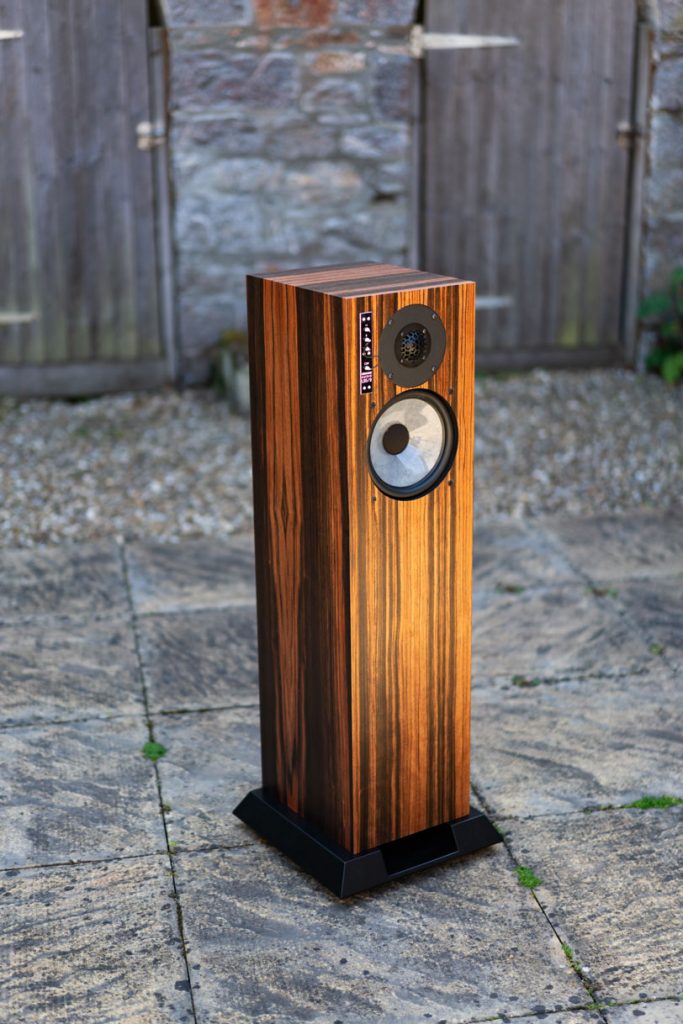
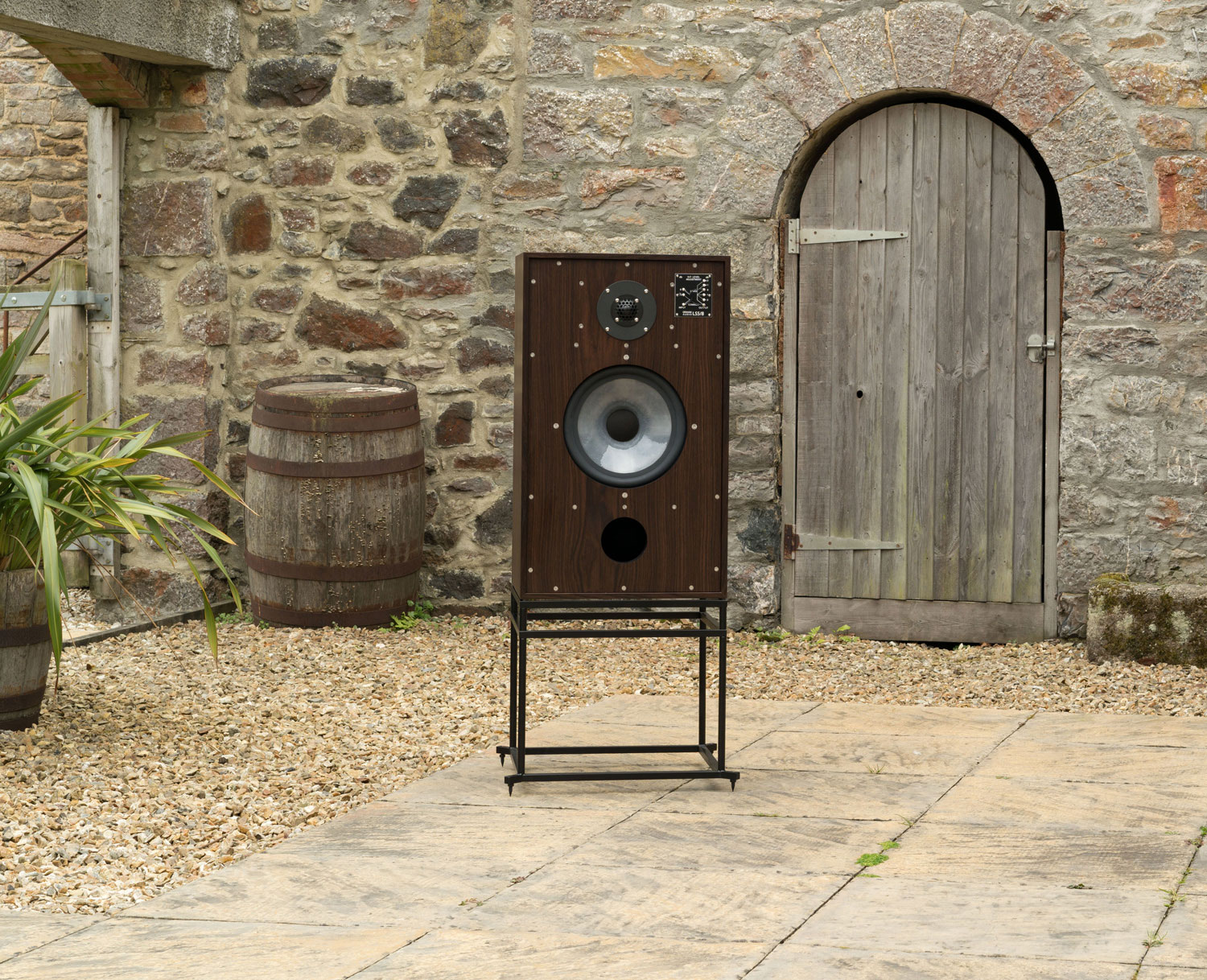
The BBC LS5/8 Loudspeaker
The LS5/8 is the BBC's flagship design, and was developed because of the need for higher sound pressure levels and greater transparency and consistency than the ageing LS5/5 offered.
This was the first BBC loudspeaker to use a polypropylene diaphragm which, being lighter than Bextrene, offered greater efficiency and lower colouration. A carefully researched cone profile enables the unit to work successfully well into the midrange.
After many months of intensive development, the Graham Audio LS5/8 refines the concept further. Designed in conjunction with Derek Hughes and Volt Loudspeakers and manufactured under license in the UK, it features a unique 12 inch bass/mid unit that is married to the same 34mm Audax tweeter that is used in the LS5/9.
The design retains the same midrange clarity and balance of the LS5/9, but offers an extended bass response and greater authority at high level in larger rooms.
The continuity of sound quality between the two designs means that engineers can move between the two different loudspeakers with complete confidence during the recording and mastering process.
The LS5/8 was originally conceived as an active design, but Derek Hughes has designed a passive crossover that greatly improves on the resolution and imaging of the original design while still conforming to the demanding BBC specification.
The result - a truly stunning, accurate and articulate monitor loudspeaker!
V.O.T.U. - Voice Of The Universe Loudspeaker
Building on the research and development that delivered the bespoke SYSTEM3D - a high quality professional sound reinforcement loudspeaker originally designed for the Royal Opera House in Covent Garden, London - the VOTU brings new levels of refinement and authority to the discerning home enthusiast or professional user alike.
The VOTU uses two 10" drivers which cover the bass frequencies and extend up to 800Hz, where a refined 3" soft dome driver takes over, covering the critical midrange region until 4kHz, at which point the high power 34mm soft dome tweeter comes in to play.
The midrange dome is mounted above the tweeter to improve the integration between it and the tweeter.
VOTU employs a crossover network with high grade capacitors and air core inductors that won't saturate at high power levels. These premium components ensure that harmonic distortion is kept at extremely low levels for maximum preservation of low-level detail.
As with all Graham Audio loudspeakers, the cabinet follows BBC "thinwall" practice, where careful damping of the relatively thin panels is designed to move all colourations away from the midrange area where we are most sensitive to low-level resonances.
The sculpted 3-part front panel and high-gloss lacquered finish will suite both classic and modern interiors.
This flagship system can be used with amplifiers up to 1000 watts per channel, and is capable of a breathtaking dynamic performance, while losing nothing of the subtlety and resolution associated with Graham Audio loudspeakers, even when played at very low levels late at night.
Truly the best of all worlds!
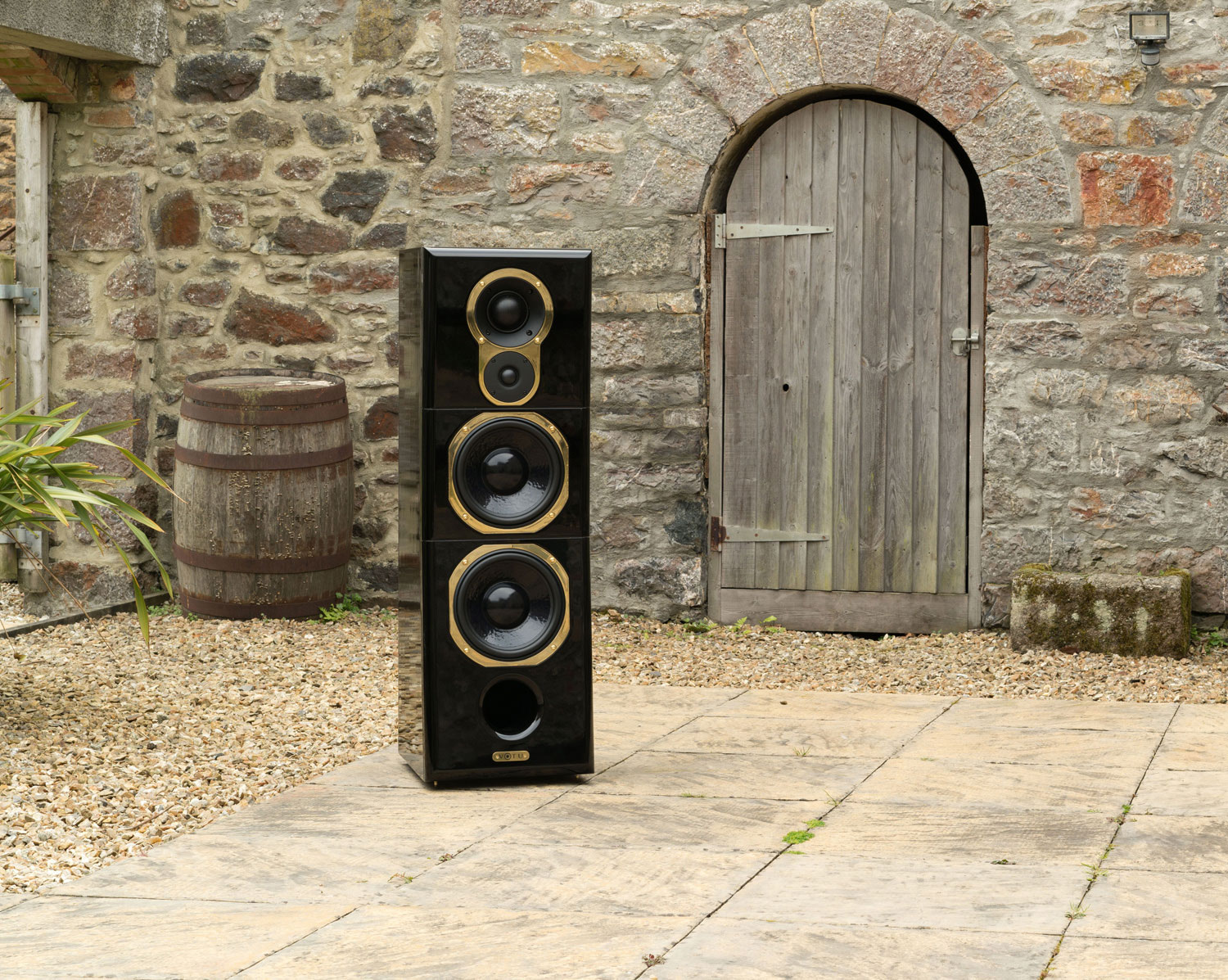
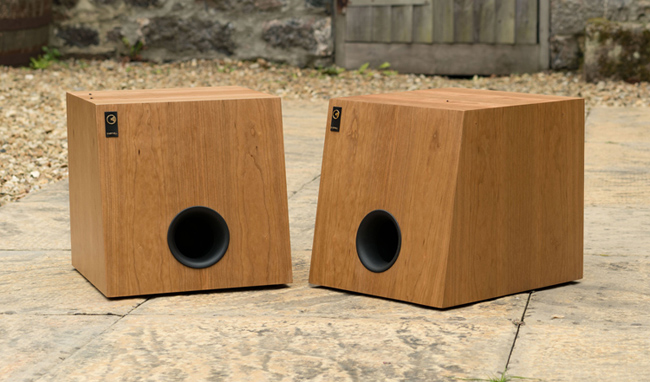
The Chartwell 3 Sub
The Chartwell Sub 3 is a compact passive sub-woofer, designed to be used in conjunction with the Graham LS3/5, but also applicable to other designs of quality loudspeakers with similar sensitivity and impedance.
Intended for use close to a rear wall, the existing speakers remain in their normal 'free space' position as the Chartwell 3 sub has a front facing reflex port.
Internally the crossover uses high quality components such as air core inductors for zero saturation distortion and polypropylene capacitors for performance stability across the musical range.
The sub has connections on the rear for the input from the amplifier and a daisy chain output to the main speakers.
There is also provision for feet or spikes to be fitted into the base of the cabinet.


